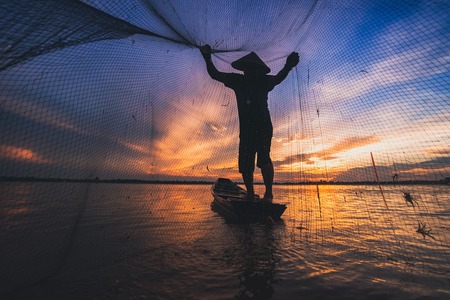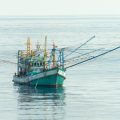Capturing the Daily Lives of Indian Fishermen
When you pick up your camera and walk along the coastline of Kerala or the banks of the mighty Ganges, you will discover a whole new world woven with salt, sweat, and stories. The daily life of desi fishermen is a testament to resilience and deep-rooted tradition. Early morning hours see these hardworking souls setting out in their wooden boats, chanting age-old mantras for good luck as they row into misty waters. Their lives are inseparable from the tides—they read the sea like an old friend, knowing when to venture out and when to wait. In every frame you click, you’ll find more than just men at work; you capture a generational bond, with fathers teaching sons how to mend nets or mothers preparing the day’s catch for the local market. Fishing is not only a means of livelihood—it’s their identity, tying them closely to both family and community. Through photography, you witness how festivals like Narali Purnima bring everyone together, offering coconuts to the sea goddess for protection. These vibrant routines and challenges—the uncertainty of monsoons, fluctuating fish stocks, or sharing tea by a bonfire—form an unfiltered narrative of survival and celebration unique to every Indian fishing village.
2. Traditional Fishing Techniques across India
India’s vibrant fishing communities have preserved a wealth of traditional techniques, each deeply rooted in local cultures and environmental conditions. As I travelled with my camera from Kerala’s tranquil backwaters to the bustling shores of Gujarat, I discovered a fascinating array of ancient methods still thriving amidst modernisation.
Cast Netting: A Common Sight from East to West
One of the most visually captivating methods is cast netting, known locally as “jal throwing”. Fishermen skilfully fling circular nets, weighted on the edges, onto shallow waters—especially at dawn or dusk when fish are most active. This method requires precise timing and years of practice, making for some truly dynamic photographic moments along the Ganges delta and Andhra Pradesh’s coastlines.
Bamboo Traps: Ingenious Handcrafted Devices
In Assam and Bengal, bamboo traps—called “Chepa” or “Donga”—are artfully woven and set in flowing rivers or paddy fields. These eco-friendly devices lure fish inside but prevent their escape, showcasing both sustainability and craftsmanship. Capturing these traps being crafted or checked by local women offers an authentic glimpse into rural Indian life.
Hand Lining: The Personal Touch
Along the Konkan and Malabar coasts, hand lining is still practised by older generations. Using simple lines wound around wooden spools, fishermen rely on experience and intuition to feel for bites. This intimate method allows for selective catches, reducing bycatch and maintaining ecological balance—a detail that adds depth to every photograph.
Regional Variations in Traditional Fishing Methods
| Region | Main Technique | Local Name | Cultural Significance |
|---|---|---|---|
| Kerala Backwaters | Chinese Fishing Nets | Cheena Vala | Iconic symbol; community-based operation |
| Bengal Delta | Bamboo Traps | Donga/Chepa | Sustainable riverine fishing; family tradition |
| Gujarat Coast | Cast Netting & Trawling | Jal Throwing/Gill Netting | Migratory fishing camps; monsoon dependence |
| Andhra Pradesh Coastline | Cast Netting/Stake Nets | Bokkina Jalalu/Pedda Valu | Tidal rhythm-based, small-scale fisheries |
| Northeast Rivers (Assam) | Bamboo Basket Traps/Hand Gathering | Khol Jaal/Deka Palaiya | Community-managed, seasonal rituals linked to harvest festivals (Bihu) |
A Living Heritage Captured Through the Lens
The diversity in fishing techniques across India reflects not just adaptation to local waters but also centuries-old wisdom passed down through generations. For photographers aiming to capture authenticity, these practices offer a visual feast of tools, gestures, and teamwork unique to each region. Documenting them isn’t just about preserving memories—it’s about honouring the ingenuity and resilience of India’s fishing communities.

3. Boats, Nets, and Tools: Instruments behind the Catch
In every Indian coastal village, the unique silhouette of wooden boats resting on golden sands is a familiar sight. These vessels are not just means of transport; they are handcrafted works of art, built by local artisans using age-old techniques passed down from generation to generation. The narrow vallam boats of Kerala, the sturdy catamarans of Tamil Nadu, and the colourful dinghies along the Konkan coast each reflect the marine environment and fishing traditions of their region. Photography allows us to zoom in on these details—the weathered wood, layers of paint, and intricate hand-carved symbols that reveal the boat’s history and its owner’s beliefs.
Equally captivating are the fishermen’s nets, often woven by the hands of family members during off-seasons. The fine mesh of the Chinese fishing nets in Kochi or the robust cast nets used in Andhra Pradesh tell stories not just of their design, but also of community collaboration and daily life rhythms. Capturing these moments—elderly men repairing holes, children learning to weave knots—offers insight into how fishing is not only an occupation but also a living heritage embedded in Indian culture.
Beyond boats and nets, traditional tools such as bamboo traps, handmade hooks, and locally forged knives play pivotal roles in everyday fishing routines. These instruments showcase the ingenuity and adaptability of Indian fishermen as they navigate shifting tides and changing seasons. Through photography, every scratch and groove on these tools becomes a testament to years spent at sea—a visual diary chronicling survival, skill, and connection with nature.
The images born from these scenes do more than document—they celebrate the blend of practicality and artistry within India’s fishing communities. By focusing our lenses on these objects and their makers, we honour not only their function but also their deep cultural significance in shaping coastal life across generations.
4. Generational Skills and the Art of Learning
In every coastal Indian village, the art of fishing is far more than a profession—it is a heritage, lovingly passed down from one generation to another. Through my lens, I have captured the essence of this transfer of knowledge, where fathers, mothers, uncles, and grandparents serve as gurus (mentors), guiding the young shishyas (disciples) in the ways of the sea. This deeply rooted guru-shishya parampara goes beyond just teaching fishing techniques; it instils discipline, respect for nature, and pride in their maritime legacy.
The traditional Indian way of learning by observation and participation is evident on the beaches at dawn. Elders demonstrate knot-tying, net-casting, boat-rowing, and reading the tides. Youngsters follow suit, mimicking each movement with eager hands and attentive eyes. These moments are beautifully candid—full of laughter, gentle corrections, and shared silences while waiting for a catch. The camera captures not only skills but also the emotional bonds that strengthen community resilience.
Table: Generational Transmission in Indian Fishing Communities
| Generation | Role | Skills Passed Down | Learning Method |
|---|---|---|---|
| Elders (Guru) | Mentor/Teacher | Net making, navigation, weather prediction | Demonstration & Storytelling |
| Adults (Parents/Uncles) | Practitioner/Guide | Casting nets, repairing boats, fish sorting | Hands-on Training |
| Youth (Shishya) | Learner/Assistant | Assisting with daily tasks, learning rituals | Observation & Practice |
| Children | Observer/Future Shishya | Absorbing culture & values | Watching & Listening |
This cycle is both timeless and adaptive. As technology enters their lives—like motorized boats or mobile phones—elders blend old wisdom with new methods, ensuring traditions survive while embracing progress. Photographs tell stories of not just survival but thriving through unity and respect for ancestral knowledge. In this dance between tradition and change, the guru-shishya bond remains the invisible net binding generations together along India’s diverse coastline.
5. Women and Children in Fishing Communities
The Backbone of Coastal Life
While the images of Indian fishermen casting nets at dawn may capture the spotlight, it is often the women and children who form the backbone of these coastal communities. Through my lens, I have come to realise how much of India’s fishing economy thrives because of their invisible yet indispensable work.
Women: The Unsung Heroines
Women’s roles in fishing villages stretch far beyond mere support. From mending nets along Kerala’s backwaters to sorting the morning’s catch on Goa’s sandy shores, their hands are constantly at work. Many are skilled negotiators at bustling fish markets, ensuring fair prices and sustaining family incomes. In several regions, such as Tamil Nadu and Odisha, women also process and dry fish—transforming fresh catch into delicacies that travel across India’s markets.
Children: Learning by Doing
For children in these communities, learning begins early and is shaped by both necessity and tradition. Youngsters help their parents repair boats or carry baskets of fish from shore to shanty. Some attend local schools but return in the afternoons to lend a hand. These experiences not only provide practical skills but also foster a deep connection with both sea and community.
Sustaining Traditions Through Generations
Photography offers a unique window into these behind-the-scenes moments—the laughter as children untangle nets, the quiet determination on women’s faces as they prepare fish for market. These candid glimpses tell stories of resilience, adaptability, and cultural continuity that might otherwise go unnoticed by outsiders.
The Heartbeat of Local Economies
The daily lives of women and children are crucial to sustaining India’s traditional fishing methods. Their efforts ensure that age-old practices survive amidst change and challenge. By documenting these scenes through my camera, I hope to give them the recognition they so richly deserve—and inspire others to look beyond the obvious when exploring Indian fishing life.
6. Challenges of Modernity: Preserving Heritage in a Changing India
As India’s coastal regions rapidly urbanise, the age-old traditions of our fishing communities are facing unprecedented challenges. The lens of photography now captures not just the vibrant daily lives of fishermen but also their struggles to adapt and survive amidst modern pressures. Urban sprawl has encroached upon once-pristine fishing villages, with concrete jungles replacing coconut groves and sandy beaches. Fisherfolk who once relied solely on traditional boats like vallams or catamarans now find their access to the sea obstructed by luxury resorts and commercial ports. Environmental concerns have become a pressing issue as well, with pollution in the form of plastic waste, oil spills, and chemical run-off threatening marine life and depleting fish stocks. For generations, Indian fishermen practised sustainable methods—using hand-cast nets and respecting seasonal cycles—but these practices are increasingly at odds with commercial trawlers that prioritise quantity over conservation.
The Double-Edged Sword of Technology
Modern technology offers both hope and hurdles for India’s fishing communities. On one hand, GPS devices and mechanised boats can help fishermen venture further into the sea, increasing their catch and income potential. On the other hand, reliance on these advancements often leads to higher operating costs and debt, especially for small-scale fishers. Moreover, younger generations are being lured away from ancestral occupations by urban employment opportunities, leaving traditional skills at risk of fading away forever.
Documenting Change Through Photography
Photography serves as both witness and advocate in this transformation. Through candid images of weather-beaten faces repairing nets at dawn or children learning to paddle country boats, photographers document not only daily routines but also the resilience and adaptability of these communities. Every frame becomes a silent plea for heritage preservation—a reminder that India’s identity is deeply intertwined with its coastal cultures.
A Call to Preserve Coastal Heritage
As we scroll through these visual stories on social media or in exhibitions from Chennai to Kochi, let us remember the importance of supporting local fishermen—whether by choosing sustainably caught fish, participating in beach clean-ups, or amplifying their voices through art and advocacy. Only by acknowledging both the challenges and the beauty captured in these photographs can we hope to ensure that India’s rich fishing heritage survives for future generations.

